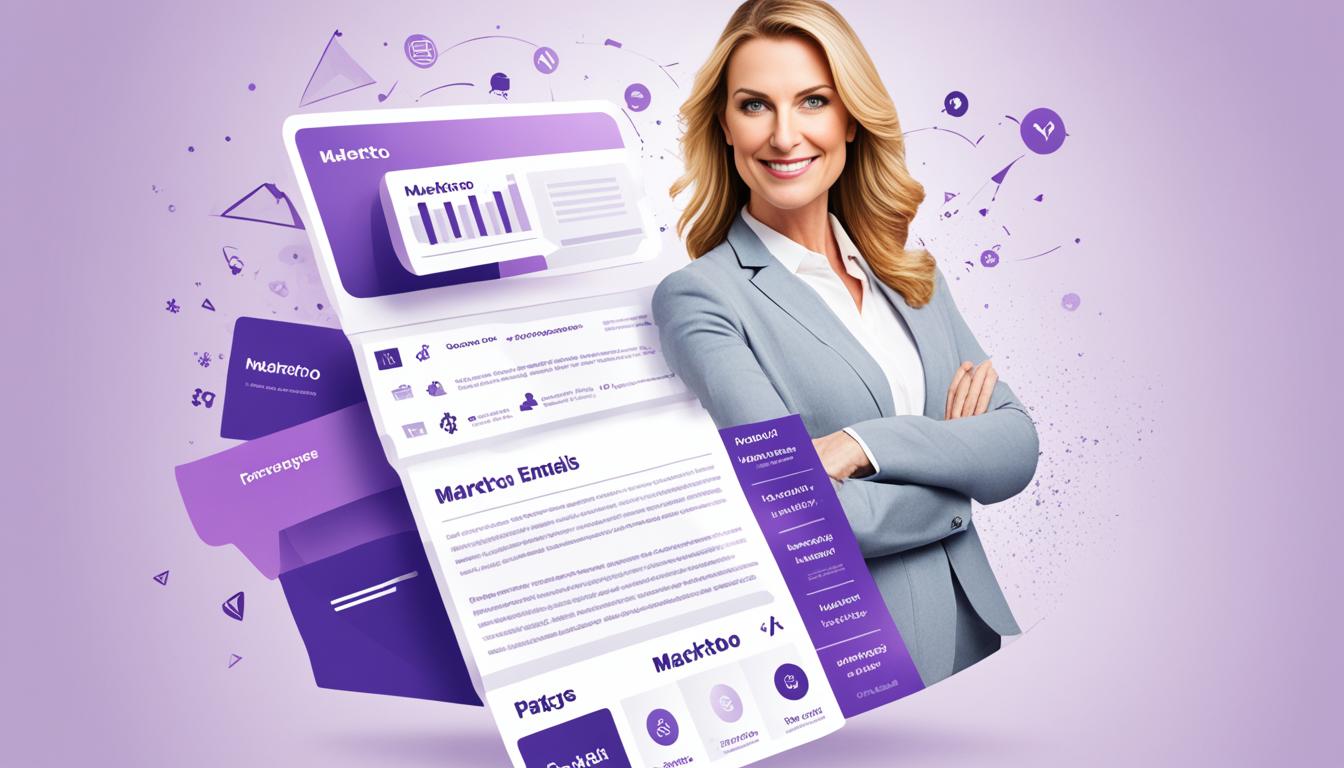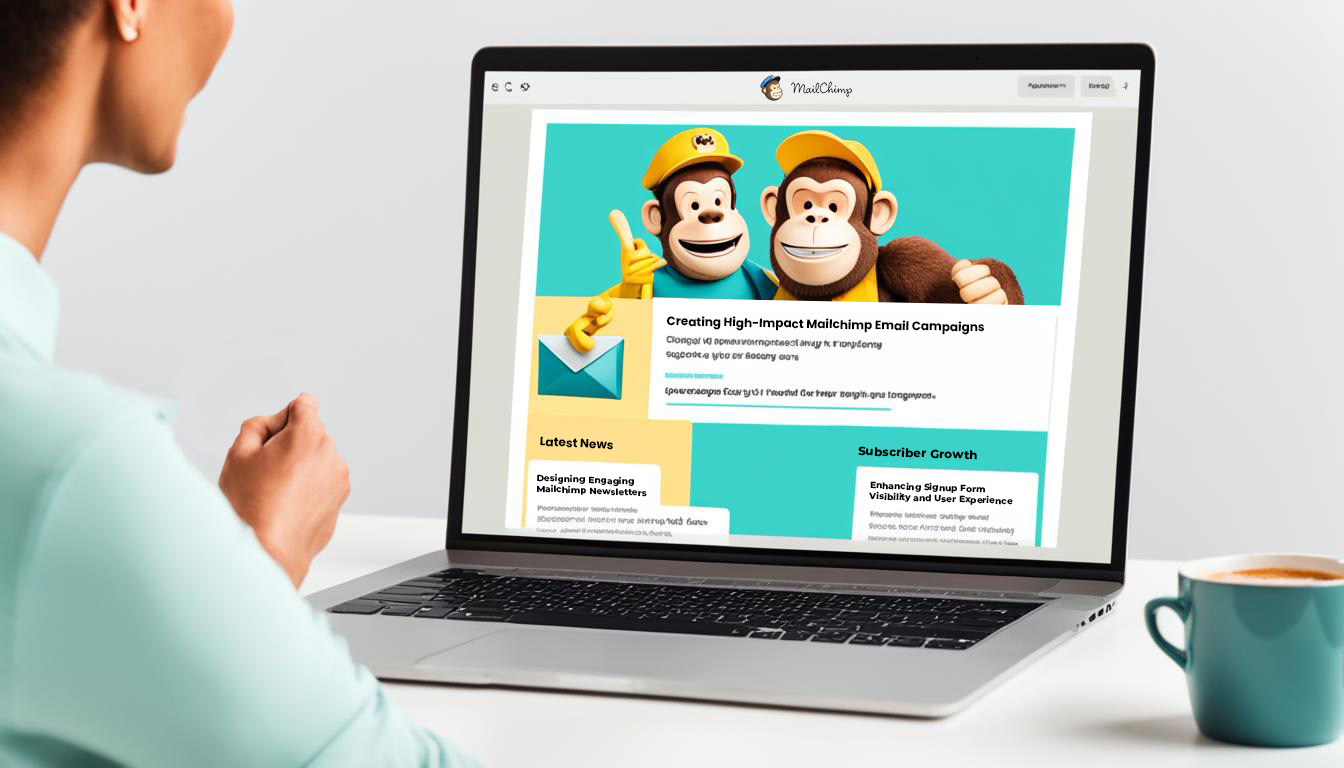In the fast-paced world of digital marketing, personalization strategies lead the way. They make each customer’s experience unique and intriguing. Marketo, a top-notch marketing automation tool, is key for marketers who want to reach their audience effectively. By tailoring emails and landing pages to match user preferences and actions, companies increase their marketing success.
This opening discussion explores how Marketo’s features and personalization work together. It shows how they change broad communications into meaningful conversations with your audience.
Key Takeaways
- Understanding the crucial role of Marketo in customizing marketing communications.
- Insights into the effectiveness of personalized emails in enhancing customer engagement.
- Exploring the importance of well-crafted landing pages in delivering tailored user experiences.
- Discovering the synergy between personalization and marketing success in the digital landscape.
- Integrating advanced Marketo features to realize the full potential of personalization.
Embracing Personalized Marketing in the Digital Age
In our digital age, consumers see tons of content every day. Personalized marketing helps businesses stand out. It’s more than using the customer’s name. It means making experiences that really hit home. The power of personalization can’t be ignored today. It boosts customer interest and drives real results.
But, getting personalization right takes work and the right tools. That’s where Marketo comes in, showing the role of Marketo in making marketing personal. Marketo gives marketers tools for campaigns that feel individual. These tools are based on understanding customers’ actions and needs.
Understanding the Power of Personalization
Personalization is more than a trendy word; it’s a game-changer. It matches content with what users really want and need. To get it right, you have to dig into data on customer behavior. This lets you make and share content that truly speaks to each person.
The Role of Marketo in Personalization
Using Marketo, companies can start and keep up marketing that really connects. They treat customers as individuals, not just part of a group.
Marketo changes how marketing is usually done. It allows for content that changes based on the customer, using personalization tokens and segmentation. This means marketing can adapt as customers interact online. Marketo makes sure messages stay relevant and effective.
Unlocking Marketo’s Personalization Potential
We’re exploring Marketo, and it’s clear that Marketo’s personalization potential is invaluable for marketers. They can target their audience with amazing precision. By using personalization tokens and dynamic content, marketers can change basic marketing into tailored talks with their audience.
Benefits of Personalization Tokens in Marketo
Personalization tokens in Marketo are incredibly powerful. They fill in with specific details from a lead, like a first name or industry knowledge. This makes each message feel like it’s made just for the receiver.
- Boost engagement by addressing recipients directly and with context
- Streamline content creation for campaigns at scale
- Enable real-time personalization, adapting even after initial deployment
Strategies for Using Marketo Dynamic Content
Using Marketo dynamic content is not just about personalization tokens. It’s about using data and strategies to make custom experiences for each user. This approach can greatly improve how customers engage and convert.
- Analyze past interactions to inform content variations
- Segment your audience to deliver more relevant messaging
- Test different versions of dynamic content to optimize performance
Thanks to Marketo’s tools, marketers can create stories that feel personal to each user. This builds a stronger bond between the brand and the consumer.
Personalization Strategies in Marketo
Effective personalization strategies give you an edge in today’s market. Using Marketo fully can deliver unique messages to different groups. We will explore how Marketo can be a key player in personalization.
Today, personalization is essential. It shows you know what your customers and prospects like and need. Using Marketo for personalization helps your campaigns stand out and builds loyalty.
“As each individual is unique, so should be their customer journey. Marketo provides the tools to make that a reality, turning every communication into a one-to-one conversation.”
Marketo lets companies personalize content widely. How does one start? We’ll look into some effective strategies next.
- Create segmented lists based on customer behavior and demographics to drive more relevant content.
- Use Marketo’s data-rich environment to craft messages that resonate with each segment at different stages of their buying journey.
- Implement dynamic content to automatically tailor emails and landing pages to the individual level.
Using Marketo’s strategies, businesses can market better, meet customer expectations more accurately, and improve conversion rates through a tailored approach.
The key to Marketo personalization strategies lies in data. Using your data to improve communication is crucial. With Marketo, every interaction is a chance for deeper personalization, making marketing more powerful.
- Evaluate the success of different personalization tactics and optimize continually.
- Employ A/B testing to find the most effective personalized approaches.
- Take advantage of Marketo’s AI and machine learning features to predict and automate the most relevant content for your audience.
Technology sets the stage for personalization. But truly understanding and connecting with customers individually makes Marketo’s personalization more meaningful. This approach goes beyond the general to create a real connection.
Crafting Targeted Email Campaigns with Marketo
The digital marketing world is always changing. Having the skill to send targeted email campaigns is key for making real connections with people. Marketo is leading this change. It gives advanced tools to make personalized email content that clicks with readers. With Marketo, marketers can create content that’s not just relevant. It’s also made just for what each person needs and likes.
Designing Personalized Email Content
Getting email campaigns right is important. Adding personalized email content is critical for this. It’s more than using someone’s first name. It’s about making content that seems made just for them. Marketo makes this easy by using data on behavior, past buys, and what users like. This approach doesn’t just get more people to open emails. It also keeps customers loyal and boosts sales.
Segmentation Techniques for Enhanced Email Relevance
While it’s important to focus on content, don’t forget about segmentation. Segmentation techniques in Marketo let marketers divide their audience into specific groups. This can be based on things like age or how they act. This makes sure the right message gets to the right people. Good segmentation means messages are more on target. They meet the unique needs and interests of different groups within your audience.
- Demographic-based segmentation: Tailor content according to age, location, job title, and other identifiable factors.
- Behavioral segmentation: Segment users by their interaction with previous campaigns, website engagement, and product preferences.
- Custom segmentation: Use unique data points relevant to your business and audience to create specialized segments.
By using these strategies for targeted email campaigns, Marketo’s powerful personalized email content, and smart segmentation techniques, email marketers can greatly improve their campaigns. This leads to better customer involvement and more success.
Maximizing Conversions with Marketo Landing Pages
Landing pages are key to digital marketing success. They can greatly impact conversion rates. Marketo landing pages help create webpages that draw visitors in and encourage them to act. By focusing on the audience’s needs, we can make pages that really connect and boost conversions.
Optimizing Landing Page Design for Engagement
A landing page’s design should be clear and simple. It should make visitors want to take action. Using a neat layout, eye-catching images, and to-the-point text makes for an effective Marketo landing page design. This way, your page can quickly share its value and maximize conversions. Here are some tips:
- Make use of bold headlines to capture attention and outline benefits.
- Implement eye-catching, relevant images that support your messaging.
- Include clear, actionable calls-to-action that stand out.
- Arrange content in an easily digestible format, leveraging bullet points or short paragraphs to break up text.
- Utilize responsive design to ensure your landing page looks great on any device.
Leveraging APIs for Personalized User Experiences
Personalization is critical in today’s marketing. Using APIs with Marketo landing pages can create personalized user experiences. APIs let Marketo connect with other data sources or apps, customizing content in real-time based on user details.
APIs expand the horizon of what’s possible on a landing page, turning it into a dynamic platform that adapts to the needs and interests of each visitor.
By using APIs, marketers can fill landing pages with content that speaks directly to each visitor. Things like product suggestions, special deals, or pre-filled forms can make the page more engaging. This makes visitors more likely to convert because the content fits their interests and past actions.
Segmentation: A Key Pillar in Marketo Personalization
Understanding segmentation is crucial for unlocking Marketo personalization‘s full power. It’s fundamental for targeted campaigns. This ensures messages meet the specific needs and behaviors of viewers.
By dividing the market into unique segments, marketers can craft smart lists. They can then send tailored messaging that suits the interests and behavioral data of each group. This boosts the effectiveness of their marketing work.

Building Smart Lists for Tailored Messaging
Creating smart lists is a key step in Marketo personalization. These lists are made by looking at things like demographics, how much people engage, or their buying history. This allows for more specific personalization.
Smart lists make sure that only the right prospects get your messages. This increases the chances of them taking action due to the highly customized content.
Advanced Segmenting with Behavioral Data
For more advanced Marketo personalization, using behavioral data for segmentation is key. Watching how prospects interact with your brand across various channels reveals their interests. This helps predict their future actions and preferences.
Using this data enhances segmentation. It creates personalized experiences that captivate and encourage ongoing interaction.
Data-Driven Personalization Tactics in Marketo
In today’s world, people expect a lot from the brands they interact with. Data-driven personalization stands out as a key approach. Marketo, a leading engagement platform, offers ways to make customer interactions more personal. This includes using CRM data to get a unified customer view. This view lets marketers target their campaigns more effectively.
Integrating CRM Data for a Unified Customer View
Connecting deeply with audiences requires blending Marketo with CRM data. By integrating CRM data into Marketo, you get a full picture of each customer. This helps turn random interactions into meaningful experiences. Having a unified customer view gives marketers the info needed for personalized marketing strategies.
By harnessing CRM data, companies can make their marketing more like a two-way conversation. Every message is informed by detailed historical data.
Enhancing Lead Profiles with Progressive Profiling
Marketo’s approach includes an important tactic called progressive profiling. This strategy is key in developing lead profiles. It’s about slowly gathering data to learn more about customers’ preferences. As customers interact more, Marketo asks for more details, making the lead profile more precise.
- Reduction of friction in lead capture processes
- Capturing relevant information across multiple engagements
- Continuous optimization of personalization efforts based on new data
By focusing on progressive profiling, Marketo users make sure their messages stay personal. They also keep them relevant and interesting for their audience.
Best Practices for Effective Marketo Forms
Marketo forms are key for gathering data in digital marketing. They help with user engagement and valuable conversions. By focusing on user experience and following data security rules, we can make these forms much better. It’s not just about collecting information. It’s about doing it respectfully and safely.
Designing for User Experience and Conversion
For Marketo forms, design and user experience go hand in hand. A form must be easy to use, look good, and be straightforward. To improve conversion rates, consider these tips:
- Keep the number of fields low to only what’s necessary. This helps avoid overwhelming users.
- Use placeholder text and labels to make clear what information is needed.
- Use conditional logic to make your forms react to what users do.
- Add visual cues, like check marks or progress bars, to help users through the form.
- Make sure forms work well on all devices for easy use anywhere.
Great design and functionality make users more likely to complete forms. This helps move them further along in the sales process.
Ensuring Compliance and Data Security
While good design is important, following compliance rules and ensuring data security are essential. Stick to these principles:
- Always ask users openly if you can collect their information. Be clear about how it will be used.
- Make sure your forms follow global data protection laws like GDPR and CCPA. Adjust for different regions as needed.
- Use Marketo’s security features to keep form data safe from unauthorized access or breaches.
- Keep your privacy policy easy to find and current. Let users know their rights and your practices.
Handling personal information responsibly builds trust with your audience. It also protects your brand from legal issues and damage to your reputation.
By using these best practices for Marketo forms, your campaigns can become more successful. Thoughtful design and a focus on security can create forms that users are happy to fill out. This matches well with what modern digital marketing stands for.
Analytics and Optimization Techniques in Marketo
In today’s digital marketing world, using analytics and optimization techniques is key. Marketo offers tools to improve marketing efforts. For example, it can help in measuring email campaign effectiveness and in AB testing for better landing page improvements.
These tools let marketers gather useful data. And with this data, they can keep making their strategies better.
Measuring Email Campaign Effectiveness
To grasp the full impact of email marketing, diving into analytics is necessary. Marketo gives detailed metrics. These show open rates, click-through rates, and conversions. So, marketers get a clear picture of how their campaigns are doing.
By checking how effective campaigns are, they can see what their audience likes. Then, they can tweak their strategies to match.
AB Testing for Landing Page Improvements
Using Optimization techniques such as AB testing is key for a better user journey on landing pages. Marketo’s AB testing allows marketers to test different landing page versions. They can find out which parts – like headlines or images – engage users more.
This ongoing optimization process leads to better landing page improvements. In turn, this can increase conversion rates greatly.
- Identify key elements to test, like headlines, images, and layouts.
- Set clear objectives for each AB test to get focused results.
- Analyze test data to make smart choices on improving landing pages.
By applying Marketo’s analytical and optimization tools wisely, marketers can surpass their goals.
Implementing Marketo Dynamic Content for Customization
Modern digital marketing thrives on tailored strategies. With Marketo dynamic content, marketers unlock powerful customization tools. These tools help create content that speaks directly to each user, improving their experience.
This exploration dives into how dynamic content triggers and conditions lead to better personalization. This process touches every part of the customer’s journey, making their experience better.
Dynamic Content Triggers and Conditions
Marketo’s customization magic lies in its dynamic content triggers. These are based on conditions like what the user has done before, their demographic info, or how much they interact. When these conditions match, the right content reaches the customer, matching their preferences.
This means the customer gets what’s relevant to them. They feel understood, creating a stronger bond with the brand.
Personalization Across Various Customer Touchpoints
Personalization goes beyond just emails. It covers all customer touchpoints. With Marketo, businesses can tailor every interaction. This includes website visits, social media, and mobile apps.
Meeting specific needs at each point makes for a smooth experience. It draws in and keeps customers, setting a business apart in a busy online world.
“Marketo dynamic content enables a synchronized dance between brand and consumer, leading to an authentic personalization that resonates at the right time and place.”
- Utilize behavioral triggers to anticipate customer needs.
- Implement condition-based messaging for relevant offers.
- Enhance user engagement through targeted content delivery.
Using Marketo’s dynamic content tools sharpens marketing. It turns customization from a buzzword into a key part of memorable customer experiences. This ensures marketing efforts hit the mark every time.
Creating a Cohesive Customer Journey with Marketo
Making sure every step of a consumer’s journey is smooth is crucial for businesses. Marketo provides tools to blend different parts of a marketing plan to keep things consistent and engaging. This helps create a cohesive customer journey that people love.
Aligning Emails and Landing Pages for Consistency
When businesses match their emails and landing pages, they tell a compelling story. With Marketo, they can fine-tune messages to emphasize brand values and goals. This kind of strategic match-up ensures customers enjoy a consistent experience online.
Nurturing Leads with Personalized Follow-Ups
Lead nurturing goes beyond the first hello; it’s about ongoing, personalized follow-ups. With Marketo, companies can automate communications that feel personal. This approach helps potential customers move along the sales funnel with a sense of care and attention.
- Developing a series of targeted emails triggered by specific user actions or milestones
- Creating dynamic content within emails that adapts to user preferences or behavior
- Utilizing real-time analytics to adjust strategies and enhance personalization
The goal is to create experiences that smoothly lead customers from one point to the next. Exceeding customer expectations is key. A well-planned journey with Marketo boosts engagement, builds loyalty, and increases conversions.
Conclusion
As we end our journey, Marketo’s focus on personalization stands out. We’ve seen how specific strategies create targeted experiences. These strategies are both elegant and effective. Personalization tokens and dynamic content change the marketing game. They make communication with audiences personal, turning marketing from noise to a need.
Segmentation and data-driven methods are also crucial. They allow Marketo users to create content that speaks directly to each audience segment. This is possible thanks to CRM integration and understanding each lead. Tailored emails and landing pages prove how personalized marketing can boost customer actions.
To sum up, exploring Marketo’s personalization has shown a way to happier customers. The results are clear: in today’s world, a personal touch builds loyalty. Using Marketo’s tools is vital. Let these insights encourage you to connect with your customers. Use Marketo to create marketing that’s not just seen but deeply felt.
FAQ
What are personalization strategies in Marketo?
Personalization strategies in Marketo involve tailoring emails and landing pages to individual customers for maximum impact.
Why is personalized marketing important in the digital age?
Personalized marketing is key today. It boosts customer engagement and helps drive conversions.
How does Marketo enable personalized marketing?
Marketo uses its features and tools to create tailored experiences. This enables personalized marketing.
What benefits do personalization tokens offer in Marketo?
Personalization tokens in Marketo allow for the dynamic insertion of personalized content. This makes campaigns more relevant to each recipient.
How can Marketo’s dynamic content feature be used for personalization?
Marketo’s dynamic content feature lets marketers craft personalized experiences. It changes the content seen by users based on their actions or traits.
What are some personalization strategies that can be implemented using Marketo?
Personalization strategies in Marketo include tailoring marketing messages and experiences to individual customers. They use segmentation and dynamic content.
How can I design personalized email content using Marketo?
To design personalized email content in Marketo, use personalization tokens and dynamic fields. These tools help dynamically populate email content based on recipient data and behaviors.
What segmentation techniques can I use to enhance the relevance of email campaigns in Marketo?
In Marketo, use segmentation techniques like analyzing behavioral data. Include past purchase history to target segments. This improves the relevance of email campaigns.
How can I optimize landing page design in Marketo to maximize conversions?
Optimize Marketo’s landing page design by focusing on clear calls-to-action and compelling visuals. Ensure a streamlined user experience to increase user engagement and conversions.
How can leveraging APIs contribute to creating personalized user experiences on Marketo landing pages?
By leveraging APIs, integrate third-party data or functions into Marketo landing pages. This helps create personalized user experiences tailored to individual preferences and actions.
How is segmentation important in Marketo personalization?
Segmentation is key in Marketo personalization. It enables tailored messaging and personalized experiences for specific audience segments.
How can I build smart lists in Marketo for tailored messaging?
Build smart lists in Marketo by setting specific criteria. Segment your audience based on attributes and behaviors. This allows for targeted and personalized messaging.
What are advanced segmenting techniques I can use with behavioral data in Marketo?
Use advanced segmenting techniques in Marketo to analyze behavioral data. Look at website visits, email interactions, and content downloads. This creates highly targeted segments for personalized experiences.
How can I use CRM data integration to achieve data-driven personalization in Marketo?
Integrate CRM data into Marketo for a unified customer view. Personalize marketing efforts based on comprehensive history and brand interactions.
How does progressive profiling enhance lead profiles for personalized experiences in Marketo?
Progressive profiling in Marketo gradually collects more lead info. This builds rich lead profiles. It allows for personalized experiences based on preferences and behaviors.
What are some best practices for creating effective Marketo forms?
For effective Marketo forms, focus on user experience and conversion. Use progressive profiling and ensure data security.
How can I measure the effectiveness of email campaigns in Marketo?
Measure email campaign effectiveness in Marketo by tracking open rates, click-through rates, conversions, and ROI. Use Marketo’s analytics and reporting tools.
How can AB testing help improve the performance of landing pages in Marketo?
AB testing lets you compare landing page variations in Marketo. Find out which designs or messages work best. This optimizes performance and increases conversions.
How can I implement Marketo dynamic content for customization across customer touchpoints?
Implement Marketo dynamic content by using triggers and conditions. This delivers personalized content across emails, landing pages, and website overlays.
How can I create a cohesive customer journey with Marketo?
Create a cohesive customer journey in Marketo by aligning emails and landing pages. Ensure consistent messaging and brand. Nurture leads with personalized follow-ups based on past interactions.



